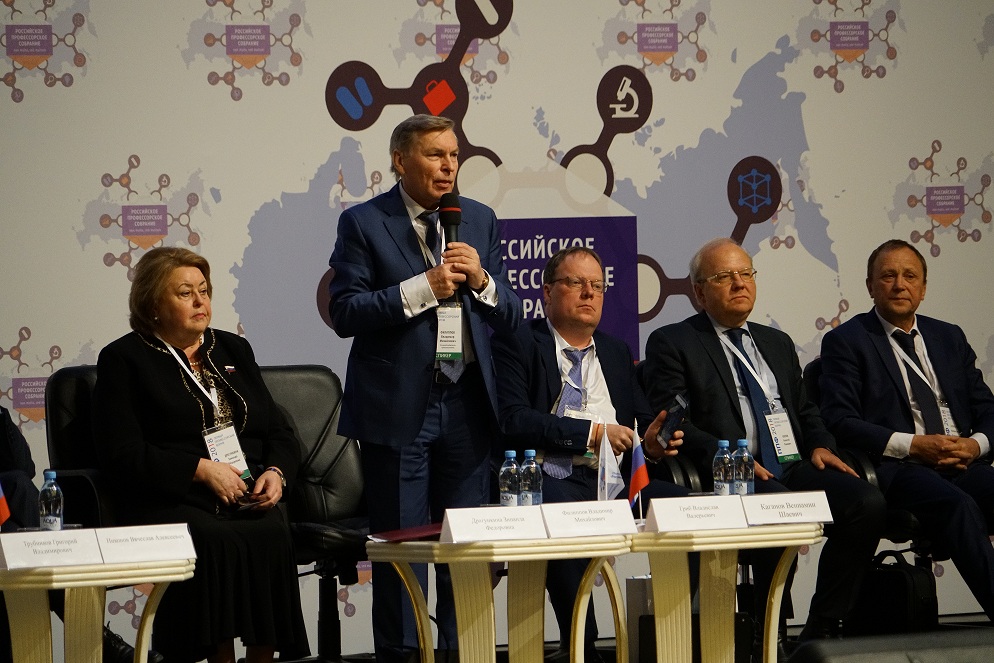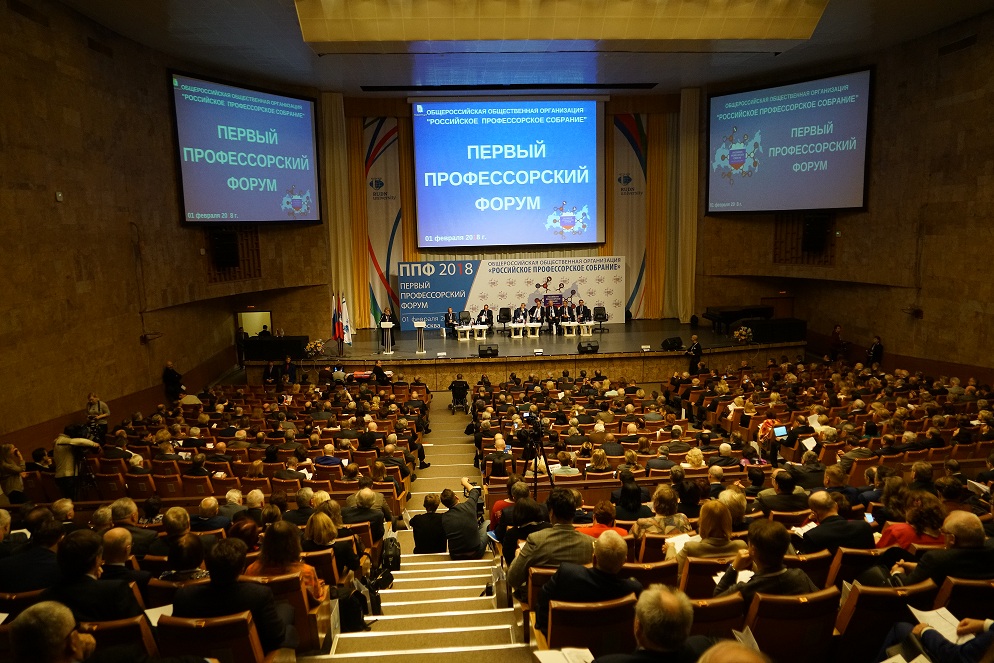Modernization of Russian education and science discussed at Professors’ Forum at RUDN
The mission of the Forum is to unite representatives of research and teaching communities and promoting a constructive dialogue between them and governmental bodies.
Vice-Premier Olga Golodets stressed that the RF government is considering expanding 5-100 Program aimed at a more active positioning of national HEIs in the international educational environment and as a result having at least 5 Russian universities on the list of 100 best universities of the world. “When new technologies are introduced, problems are inevitable. We must move forward respecting what has been done by our colleagues”, said Olga Golodets.
Major speakers of the Forum also spoke about enhancing competitiveness of the Russian education. RUDN Rector Vladimir Filippov said that the Forum is going to become a site for accumulating interests of the best intellectual forces of the country in the dialogue with the government and society.
Chairman of the Russian Professors’ Assembly, member of the RF Public Chamber V.Grib said that we should unite the intellectual potential of the country. Vice-minister for education G.Trubnikov spoke about the draft federal program “Scientific and technological development of the RF for 2018-2025”, which envisages 2,5 times more financing of research by 2025 as well as structural changes in higher education – projects promoting talented youth, developing university social infrastructure, modernizing campuses and investing in labs and equipment.
At the end of the Forum a number of cooperation agreements were signed, among them an agreement between Rosobrnadzor and the Russian Professors’ Assembly.
Products derived from microalgae represent a cutting-edge development in the field of bioeconomy. The potential of this biological resource was discussed at the international research seminar “Foundations for a Green Sustainable Energy”, part of the BRICS Network University’s thematic group on “Energy”. The event was organized by the Institute of Ecology at RUDN University.
Ambassadors of Russian education and science met at a conference in RUDN University to discuss how they can increase the visibility of Russian universities and research organizations in the world, and attract more international students in Russia.
The international scientific seminar hosted by RUDN Institute of Ecology “Experience of participation in student organizations as a way to form career skills” united scholarship recipients of the International Student Mobility Awards 2024 and Open Doors, along with members of the scientific student society “GreenLab” and the professional student association “Kostyor (Bonfire)” shared their projects focused on environmental protection.

